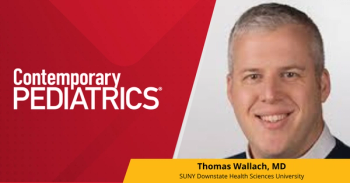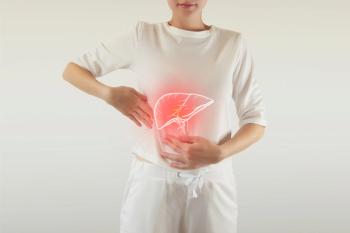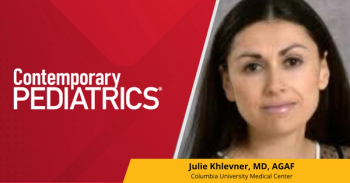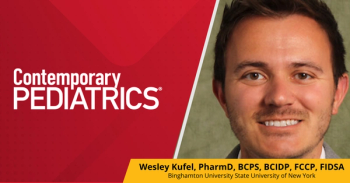
Advancing bedtime increases sleep duration in adolescents
While monitoring sleep durations (TST) across 3 different time in bed (TIB) conditions, investigators determined advancing bedtime increases sleep duration for those aged 10 to 21 years.
A substantial increase of sleep duration (TST) for adolescents can be achieved by advancing bedtimes, according to a recently published study in Pediatrics.
The authors note that the duration of sleep decreases by approximately 10 minutes per year during adolescence, resulting from a circadian phase delay and homeostatic sleep regulation changes, allowing adolescents to stay awake longer. “Reduced sleep duration and daytime sleepiness are associated with negative scholastic, behavioral, and mental health consequences,” the authors wrote, as adolescents report lower academic performance, more absences, and less enjoyment from school. Further, the authors state, “Late bedtimes and shorter sleep duration are associated with increased anxiety and depression, suicidal thoughts, an elevated likelihood of engaging in risky behavior, and an increased risk of traffic crashes.”
Investigators used polysomnography to determine how advancing bedtime for 4 consecutive nights affected “total sleep duration, non-rapid eye movement (NREM) and rapid eye movement (REM) durations, sleep onset latency, and wake after sleep onset (WASO).” Three time in bed (TIB) conditions were used in the study: 7, 8.5, and 10 hours. Using 2 cohorts, investigators determined if the ability to increase TST varied by age. One cohort (n = 77 [35 female, 42 male]) joined the study between ages 9.9 and 14.0 years (mean [SD] 5 12.2 [1.2] years). This cohort was studied for 3 years on an annual basis for which 77 participants completed the first year, 76 for the second year, and 64 for the third year. A second cohort (n = 73 [41 female, 32 male]), joined the study between the ages of 15.0 and 20.6 years (mean = 18.0 [1.6] years) with data reported for only 1 year. Six participants in this cohort only completed 1 TIB condition and were not included in analyses, resulting in 67 participants in the older cohort (39 female, 28 male, mean age = 18.1 years).
In 3 recording weeks per year, participants kept “each of 3 different TIB schedules: 7, 8.5, and 10 hours in bed for 4 consecutive nights. Three nights of 8.5 hours in bed preceded each of the 4-night schedules so that participants had the same sleep history for at least 3 nights before the assigned TIB schedules,” the authors wrote. Participants kept their habitual weekday rise times, as TIB was adjusted by changing bedtime. Individuals were told to go to bed at the assigned time, with lights off and to try and fall asleep. Even if they could not fall asleep right away, participants were instructed to stay in bed, with lights off. Participant input was allowed for TIB assignment since schedules could conflict with extracurricular activities, work, and social demands. To balance the order in which participants completed the TIB schedules, thirty-five percent of subject-years began "with 7 hours, 33% with 8.5 hours, and 32% with 10 hours TIB.” Electroencephalogram (EEG) recording and wrist actigraphy confirmed compliance among participants, related to their respective assigned TIB schedules.
On night 2, although TST “was significantly (F1142 = 21.9, P < .0001) shorter (5.8 [1.2] minutes, mixed effect estimate [SE]) than on night 4, the TIB effect did not differ between nights (TIB × night F2234 = 0.79, P = .45). In addition, TST did not differ between males and females (F1142 = 2.28, P = .13), nor was there a significant sex by TIB interaction (F2254 = 0.32, P = .72).” Average TST increased 68 minutes from 7 to 8.5 hours TIB and increased an additional 57 minutes with 10 hours TIB. For each additional hour in bed, reanalyzing data using TIB as a continuous measure, demonstrated a 41.5 (0.7) minute TST increase, made up of significant increases in REM and NREM stages.
Stages N1, wake after sleep onset (WASO), and sleep onset latency (SL) increased with TIB in a non-linear fashion. In the 8.5-hour TIB schedule, SL average was 6.2 minutes longer than the 7-hour TIB average, while the 10-hour TIB average was 10.2 minutes longer than the 8.5-hour TIB average. The WASO average increased by 12.9 minutes for the 10-hour TIB compared to the 8.5-hour TIB average, “which was 4.7 minutes greater than the 7-hour TIB average,” according to authors. For 8.5 hours TIB, 508 minutes (TST, SL, WASO, and N1 average sum) was near the assigned 510 minutes TIB. The 428-minute sum exceeded the 420-minute TIB for 7 hours. For 10 hours TIB, the 592-minute sum was shorter than the assigned 600 minutes. TST decreased with age by approximately 1.5 minutes per year, which was “entirely an REM duration increased by [approximately] 3 minutes/year. SL also increased significantly with age. Neither N1 nor WASO changed significantly with age,” the authors wrote. “The TIB effect on TST did not change significantly with age, nor did the effect on NREM or stage REM duration.”
Authors concluded that TST increased with TIB as bedtime was advanced, despite increases in SL and WASO. The average TST “increased from 402.8 (1.6) minutes with 7 hours to 470.6 (2.1) minutes with 8.5 hours to 527.5 (3.0) minutes with 10 hours TIB.” Though TST decreased with age, TIB effect on TST did not (TIB by age interaction, P = .42). Thus, adolescents can “substantially” increase TST by advancing bedtime. Further, this “ability does not change between ages 10 and 21 years.” More research is needed to determine how to convert findings of the study into real-world sleep duration increases.
Reference:
Campbell IG, Cruz-Basilio A, Figueroa JG, Bottom VB. Earlier bedtime and its effect on adolescent sleep duration. Pediatrics 2023; e2022060607. 10.1542/peds.2022-060607
Newsletter
Access practical, evidence-based guidance to support better care for our youngest patients. Join our email list for the latest clinical updates.














